15 Honorable Ideas For Kintsugi Tattoos
Kintsugi, the Japanese art of repairing broken pottery with gold, serves as a powerful metaphor for healing, resilience, and transformation. Rather than hiding the cracks, Kintsugi highlights them celebrating the history of the object and turning its flaws into unique features. In tattoo art, this philosophy translates beautifully into deeply personal designs that tell stories of pain, perseverance, and growth.
Whether you’re someone who has battled emotional trauma, physical hardship, or personal change, Kintsugi tattoos serve as elegant reminders that brokenness isn’t the end it’s a new beginning. Each design featured in this guide channels a different aspect of recovery and regrowth, allowing you to choose the version that best matches your journey.
Table of Contents
Kintsugi Heart Tattoo
The heart has long symbolized love, emotions, and vulnerability. When it breaks, the pain can feel irreparable. But the Kintsugi heart tattoo shows how even the most shattered love can be mended and made more beautiful—through healing. This design typically features a heart with visible golden cracks running through it, representing past heartbreak and the strength to overcome it.
Some tattoos include anatomical heart depictions combined with gold lines, showing the rawness of pain and the elegance of survival. The message? Love isn’t perfect. It’s fractured and flawed, but those imperfections are what make it authentic. Whether you’ve endured the pain of a breakup, divorce, or unrequited love, this tattoo offers a form of closure, allowing the bearer to wear their emotional history with pride.
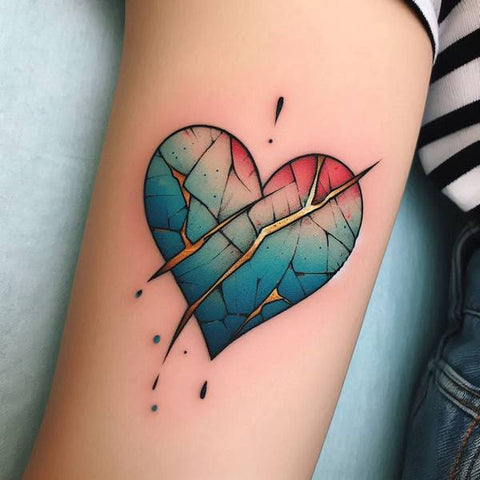
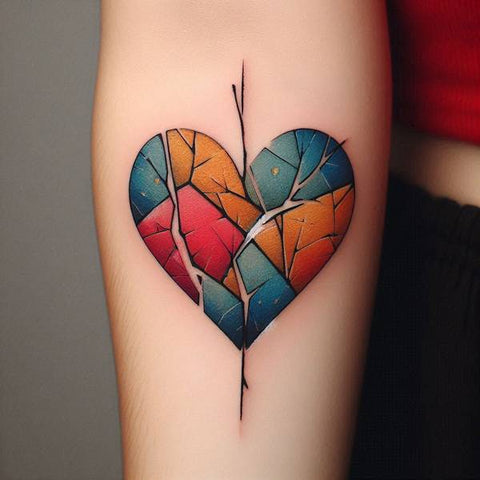
Kintsugi Kanji Tattoo
Kanji tattoos are popular for their minimalism and deep meanings. Combine this with Kintsugi, and you get a profoundly symbolic design that emphasizes language, philosophy, and healing. Typically, the kanji for “Kintsugi” or related words like “resilience,” “rebirth,” or “growth” are tattooed with golden or metallic ink highlighting cracks across or around the characters.
This style appeals to those who value introspection and wisdom. For Japanese culture enthusiasts or individuals who have healed through learning and communication, this tattoo provides a beautiful metaphor for the power of language in self-discovery and repair.
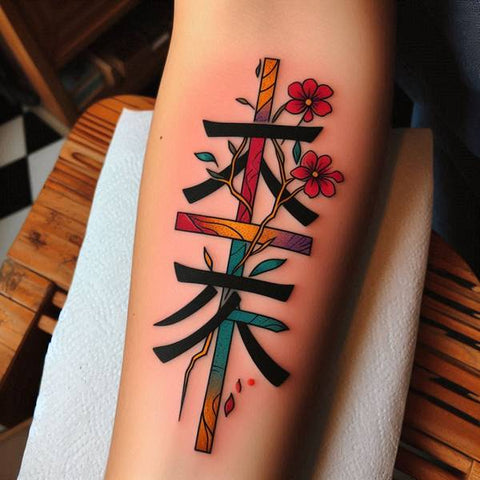
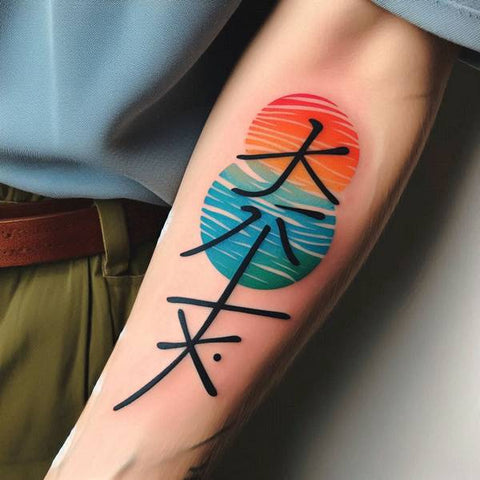
Gold Kintsugi Tattoo
This version amplifies the gold elements of Kintsugi, focusing heavily on metallic ink to showcase the repaired parts. Whether it’s a cracked ceramic bowl, a broken face mask, or an abstract shape, the gold becomes the focal point. Symbolically, this tattoo celebrates the golden days of one’s past the memories that shine bright despite the brokenness.
People often choose this design to remember someone or something significant: a departed loved one, a life-changing event, or a transformative journey. The gold ink not only adds aesthetic beauty but serves as a reminder that even in brokenness, there’s value and brightness.
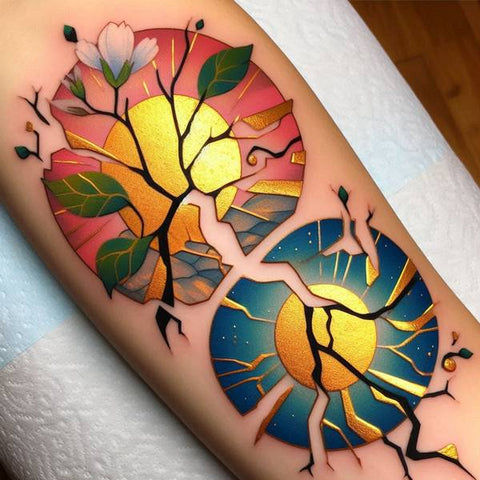
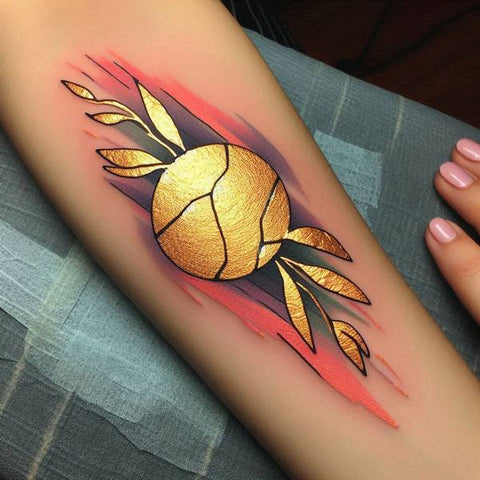
Kintsugi Brain Tattoo
Mental health and emotional intelligence are at the core of the Kintsugi brain tattoo. This design usually illustrates a human brain with cracks or sections highlighted in gold. The symbolism is clear: mental trauma, anxiety, or neurological challenges can break us but we can be pieced back together stronger.
People battling depression, PTSD, ADHD, or burnout often choose this tattoo to show their journey of recovery. It’s not just about surviving but thriving with scars. Gold becomes the thread that binds logic, emotion, and intuition, suggesting that a fragmented mind still holds wisdom and strength.
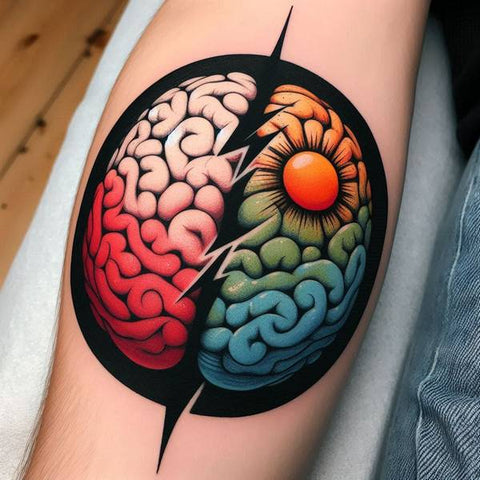
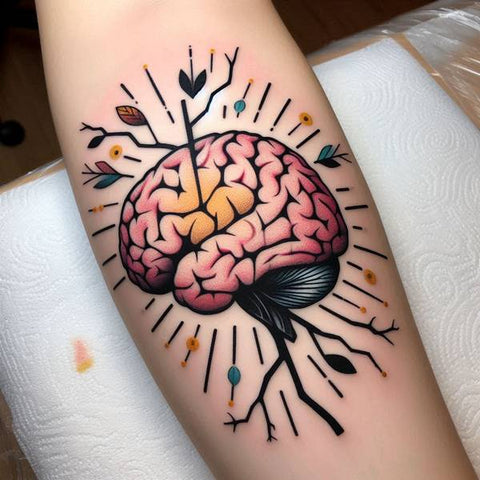
Kintsugi Butterfly Tattoo
The butterfly, a universal symbol of transformation, when merged with Kintsugi, becomes a powerful emblem of feminine strength and resilience. Many women resonate with the challenges life throws from societal pressures to personal trauma. A Kintsugi butterfly tattoo captures this metamorphosis. Wings may appear torn or cracked,
with gold shimmering through them signifying rebirth after turmoil. Some variations include women emerging from broken cocoons, highlighted in gold, symbolizing a new phase of life. This tattoo is a proud declaration of survival, strength, and the beauty found in life’s scars.
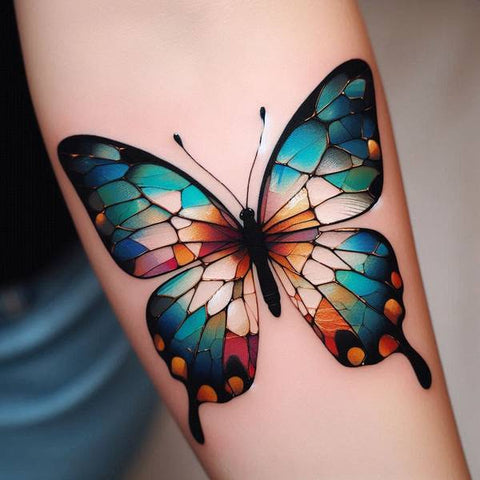
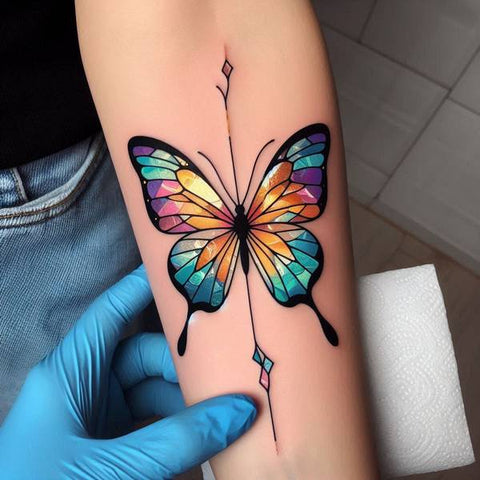
Kintsugi Chest Tattoo
Located directly over or near the heart, this version is deeply intimate. The chest is a painful yet meaningful spot to get tattooed, making it ideal for those who’ve undergone significant emotional wounds. A Kintsugi design here often represents literal heartache grief, trauma, or loss.
The golden lines can form heart shapes or flow across the chest like cracks in porcelain, implying that healing doesn’t hide the damage it highlights it. Whether you’re grieving a lost relationship, a death, or emotional betrayal, this tattoo is a personal statement of strength, placed right where you feel the deepest.
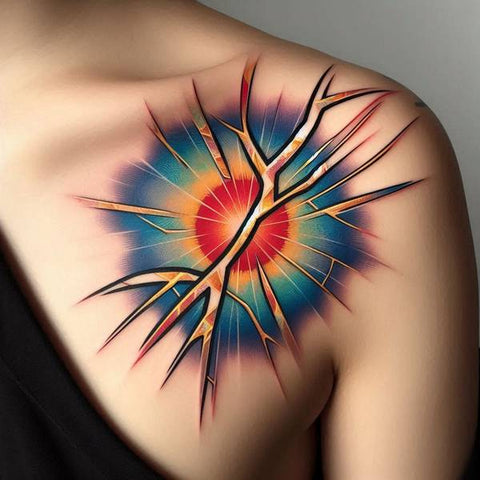
Kintsugi Tree Tattoo
Trees are enduring symbols of life, growth, and connectivity. A Kintsugi tree tattoo combines the strength of roots and branches with golden cracks that repair or accentuate the bark and trunk. Ideal for those who value nature, spirituality, or ancestral heritage, this design speaks volumes about how people can recover through connection to others, to nature, or to oneself.
A broken branch, a scarred trunk, or cracked roots lined with gold reflect past wounds and how one continues to grow regardless. It’s perfect for symbolizing family trauma, personal growth, or spiritual rebirth.
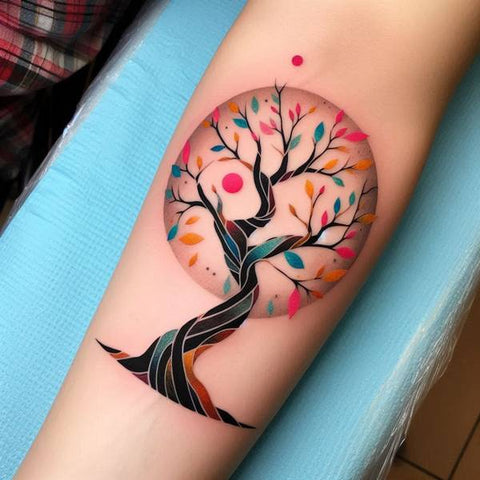
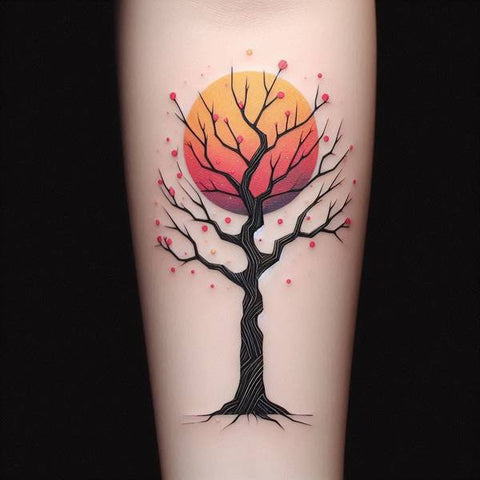
Kintsugi Tattoo On Thigh
The thigh is a discreet place, often chosen for deeply personal tattoos. A Kintsugi design here reflects private healing a recovery not displayed to the world but cherished quietly. Whether it’s a broken porcelain object, a cracked armor piece, or an abstract gold-streaked pattern, this tattoo allows the bearer to commemorate their pain and growth privately.
Many survivors of trauma, abuse, or long-term battles with mental health choose thigh tattoos to symbolize internal healing. It’s a sacred place where your body holds your narrative without needing external validation.
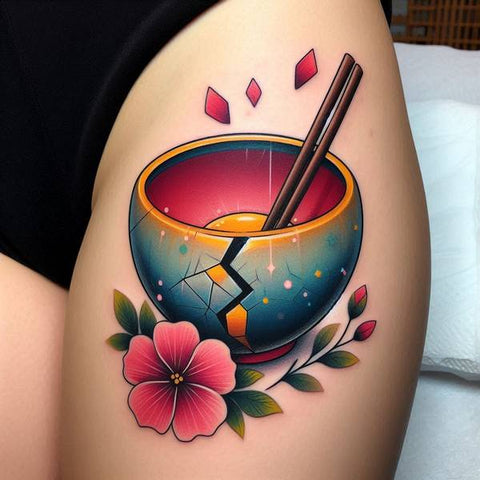
Kintsugi Tattoo On Ribs
Rib tattoos are notoriously painful and symbolize vulnerability. A Kintsugi tattoo in this area portrays a fragile but resilient soul. It might be a cracked vase, a broken rib cage with gold highlights, or poetic phrases fractured and reassembled with golden ink.
The ribs protect vital organs, so placing a healing tattoo here can mean protecting one’s inner world. It’s a testament to sensitivity, endurance, and the delicate art of living after loss.
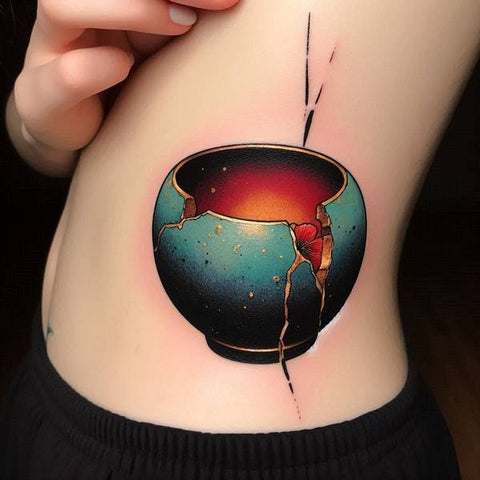
Small Kintsugi Tattoo
Not every statement needs to be loud. A small Kintsugi tattoo maybe a fragment of a pot, a subtle line of gold across a shape, or a minimalist design can still carry profound meaning. Ideal for wrists, ankles, fingers, or behind the ear, these tattoos serve as daily reminders that you’re healing.
Their simplicity doesn’t diminish their message; instead, it enhances the intimate nature of personal growth. Whether it’s your first tattoo or a hidden gem among many, the small Kintsugi design is perfect for quiet strength.
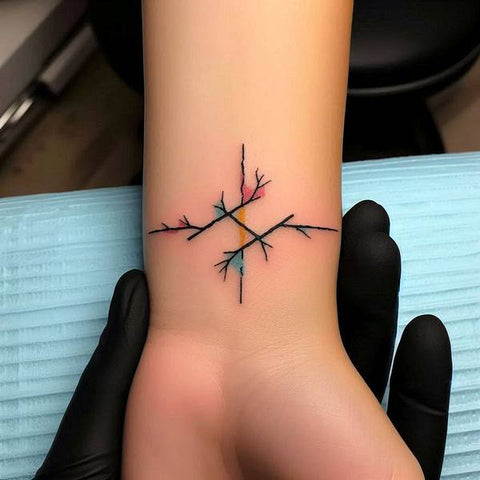
Kintsugi Tattoo On Shoulder
The shoulder bears weight, both literally and metaphorically. A Kintsugi tattoo in this spot is ideal for those who carry burdens emotionally or physically. This design often features armor, broken ceramic shields, or abstract shapes with gold repairs.
It’s a bold statement: I’ve been through battles, and I’m still standing. Whether you’re a caretaker, a survivor, or someone who’s taken on more than their fair share of hardship, this tattoo shows that you’ve not only endured you’ve evolved.
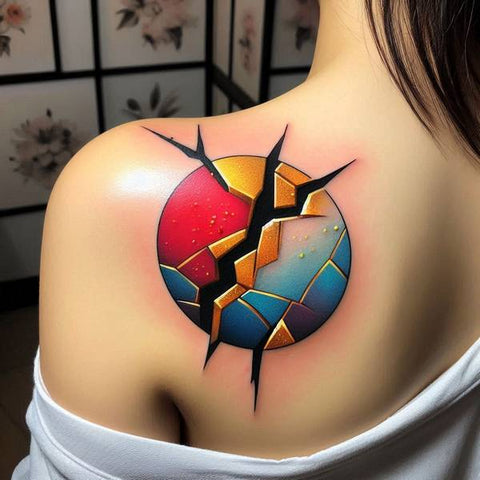
Floral Kintsugi Tattoo
Floral Kintsugi tattoos are soft yet impactful. Imagine roses, cherry blossoms, or lotus flowers with broken petals stitched together by gold. These tattoos embody feminine strength, transformation, and rebirth. Popular among women,
they symbolize how beauty doesn’t mean perfection. Scars, wrinkles, and past pain are part of the story. Some even combine these floral designs with elements of lace, watercolor, or soft hues to create a delicate balance between brokenness and beauty.
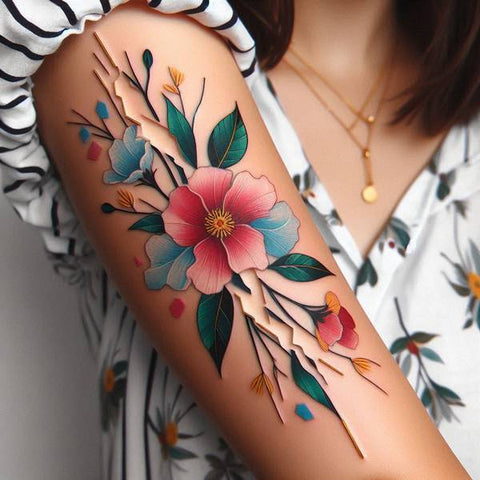
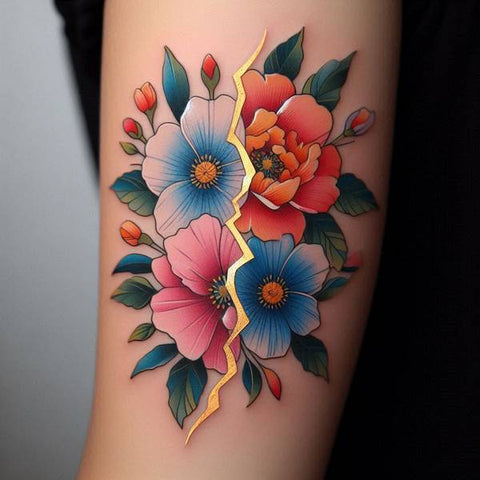
Kintsugi Back Tattoo
The back offers a large canvas, allowing for intricate Kintsugi masterpieces. Some people choose full-spine designs featuring golden cracks running like lightning bolts down the back. Others depict scenes cracked landscapes, shattered mirrors, or broken masks all fixed with shimmering gold.
This tattoo is ideal for those who’ve experienced multifaceted trauma or transformation. It suggests a narrative with multiple chapters each wound and repair adding depth to the story.
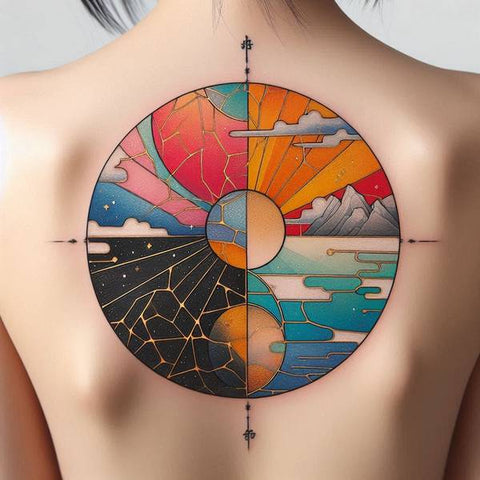
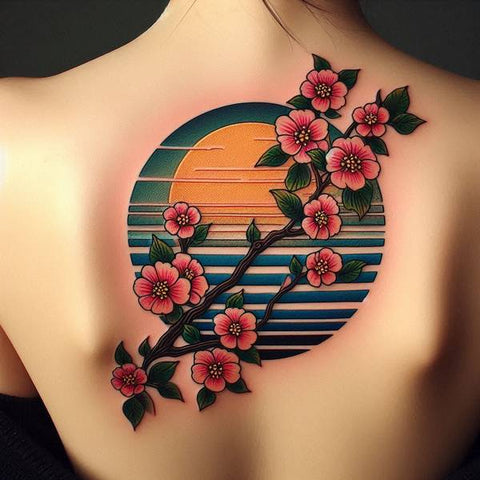
Kintsugi Leg Tattoo
The leg is an underappreciated area that provides creative freedom. Kintsugi leg tattoos often use vertical flow running from thigh to calf with golden streaks mending broken geometric patterns, ceramic fragments, or even ancient ruins.
They symbolize forward movement, progress, and personal evolution. Athletes, dancers, and travelers often resonate with this placement, as it reflects the journey of healing in motion.
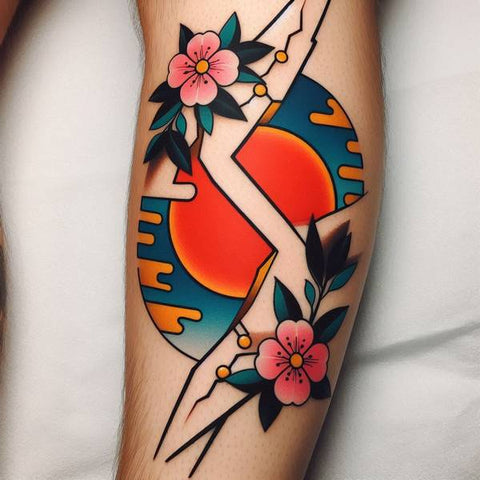
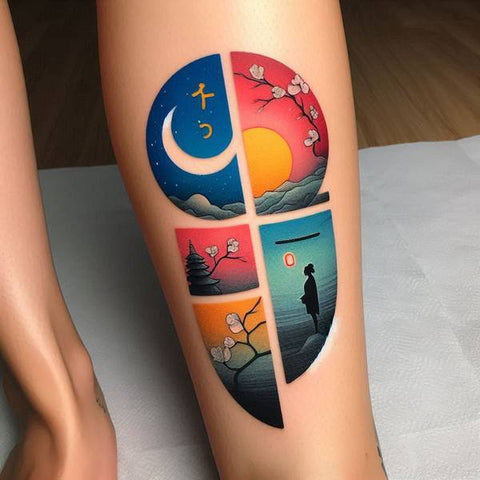
Yin Yang Kintsugi Tattoo
Yin and Yang symbolize balance and duality. Combined with Kintsugi, this tattoo reflects the harmony between brokenness and beauty, light and dark, despair and hope. One side may appear shattered and patched with gold, while the other remains whole showing that equilibrium doesn’t mean perfection,
but a functional coexistence of flaws and strengths. Ideal for those on a spiritual path, this design encourages embracing all aspects of oneself. It’s a visual reminder that wholeness includes every part of the journey even the broken ones.
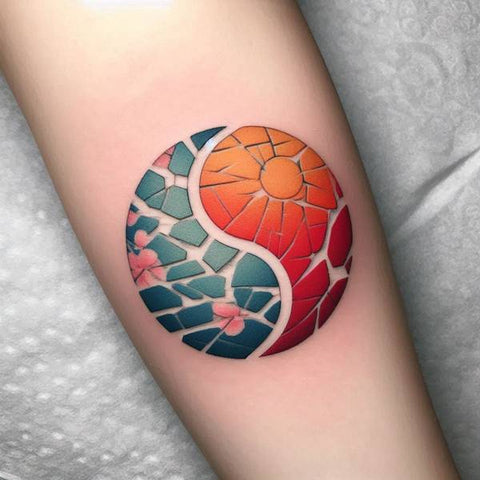
Kintsugi tattoos are not just about aesthetics they’re deeply personal emblems of resilience, wisdom, and authenticity. Each crack tells a story, and each gold line marks a triumph over adversity. From small, discreet designs to elaborate full-body masterpieces, these tattoos carry profound meanings that resonate with people from all walks of life. Whether you’re honoring past wounds,
celebrating personal growth, or simply drawn to the beauty of imperfection, a Kintsugi tattoo serves as a lasting tribute to your journey. In embracing the art of being broken and mended, you embrace your true self golden flaws and all.



